Further images
-
(View a larger image of thumbnail 1)
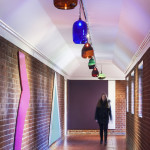
-
(View a larger image of thumbnail 2)
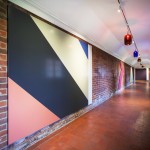
-
(View a larger image of thumbnail 3)
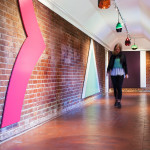
-
(View a larger image of thumbnail 4)
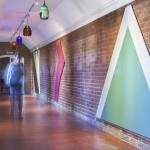
-
(View a larger image of thumbnail 5)
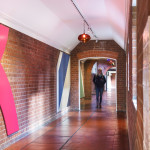
-
(View a larger image of thumbnail 6)
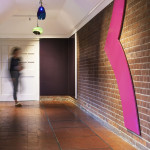
-
(View a larger image of thumbnail 7)
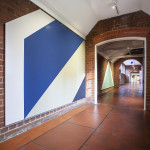
-
(View a larger image of thumbnail 8)
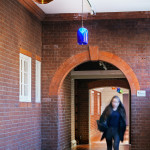
-
(View a larger image of thumbnail 9)
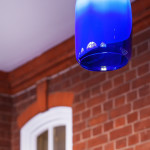
Newnham College, Cambridge University has commissioned artist Sinta Tantra to create an artwork and lighting scheme in the historic corridor connecting Kennedy Building and Peile Hall. Established in 1871, Newnham College is the only undergraduate college with an all-women Fellowship. Designed by the architect Basil Champneys, Newnham is unique in terms of its architectural style and layout. In comparison to other Cambridge campuses that revolve around a central courtyard, Newnham College comprises a series of elegant halls linked by corridors and surrounded by the college gardens.
Coloured geometric motifs adorn the inner walls whilst a series of hand blown glass pendants suspend from the ceiling. By incorporating the original brickwork into the installation, Tantra looks at spaces in between, layering the past with the present. The title of the artwork 'A Means of Liberation' references a quote by 20th-century artist Henri Matisse, ‘Colour even more than drawing, is a means of liberation.' For Tantra, colour represents not only an identity but a type of otherness which the artist embeds into the fabric of the architecture. The result is an artwork that becomes immersive and activated as people walkthrough. As light falls on the pendants and panels, pools of coloured light crescendo and dim at various points of the day. Motifs, shapes and colours for the installation have been inspired by histories and stories researched by the artist—the Newnham coat of arms, the curved architectural lines of the building, objects and artefacts from the college archive—one of which includes the brightly coloured dance cards of a young Victorian girl.
Tantra says, "I create works that celebrate the spectacle, questioning the decorative, functional and social role of art. The compositional arrangements are rooted in formalism. I am intrigued when this formalism becomes 'relational'—when private becomes public and when the viewer becomes active. My work is an 'overlay' which inserts its identity within the pre-existing—heightening a sense of fantasy within the functional."








